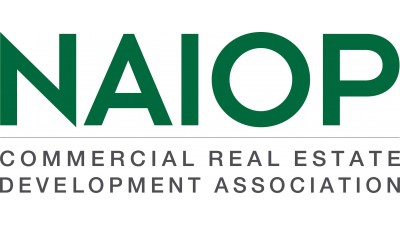Sustainability In CRE Is Not Just About Responsibility: For Prologis and Kilroy Realty, It’s An Economic Opportunity

When President Donald Trump backed out of the Paris Climate Accord this June, he said it was a bad deal for Americans. While it is still too early to tell whether the government’s departure from the agreement will benefit the U.S. as he claims, the government’s wavering on issues of sustainability has not stopped commercial real estate leaders from forging ahead with their own initiatives.
New programs have begun to prove that environmentally conscious solutions and design offer greater social and economic benefits than properties without sustainable practices.
For Prologis Vice President of Sustainability Jeannie Renne-Malone, commitment to better environmental practices is just business as usual across the company's 684M SF global portfolio.
Prologis provides high-quality logistics assets for customers like Amazon, Home Depot and Walmart. Incorporating changes like efficient lighting and rooftop solar was a natural next step in designing long-lasting buildings, Renne-Malone said. Greater power efficiency leads to improved operational efficiency for the customer, and careful attention to design ensures a high retention and occupancy rate.
“We hear from customers that they also have sustainability goals and interest in efficient lighting and operational efficiency,” Renne-Malone said. “The more we can do to improve that, the happier our customers will be in the long run.”
The company has also committed to designing 100% of its new buildings according to the sustainability guidelines in the country they are located. The regulations often encourage the use of locally sourced building materials and reduced water consumption, cost-saving initiatives that speak to shareholders’ bottom lines.

Having investor and management buy-in is a necessary piece of the sustainability puzzle. Kilroy Realty Corp. Senior Vice President of Sustainability Sara Neff said KRC was able to quickly integrate sustainability practices across all of its operations because she had senior management’s full support.
“A lighting retrofit, for instance, can encounter many obstacles: it can be hard to get the money, hard to get it to fit aesthetically, hard to manage tenant impact. It is impossible to do alone; it only works if you have everybody working together,” Neff said.
Kilroy builds, owns and manages its entire portfolio, and sees sustainability as a way to improve operational efficiency. Neff inherited a leasing program that was already green, and expanded upon it by increasing energy- and water-efficiency projects and launching a green janitorial program.
Neff's success with smaller initiatives allowed her to expand into recycling and composting programs, and more recently, a biodiversity commitment that requires exterior landscaping to incorporate regionally appropriate, pollinator-friendly plants.
Kilroy’s portfolio is 52% LEED-certified, and Prologis recently achieved its target of 20% corporate carbon emissions reduction ahead of its 2020 goal. Reaching for certifications and awards can show potential investors and tenants that a company is serious about sustainability, and may win more business.
“When you pursue a certification, it creates a culture and shows how you do business," Neff said. "It wasn’t standard practice that we would certify our new buildings and now it is just taken as a given. I have a lot of tenants who won’t look at a building if it is not LEED Gold, or, in some cases, LEED Platinum.”

The path to sustainable CRE practices starts with baby steps. Renne-Malone and Neff said real estate companies managing any asset class can get started by setting green benchmarks and goals before diving into green adoption programs. Developers need to see where they stand and where they would like to be 10 years out.
“Whether it is an energy baseline for your portfolio overall, or corporate greenhouse gas emissions or water consumption, do as much as possible to set a baseline and then create some goals around it,” Renne-Malone said.
Companies can research and implement established programs, like changing lighting and adding solar panels, before moving toward fuzzier initiatives like health and wellness.
“Health is a lot trickier. Is it air quality, is it water quality, is it particular features or some combination? There currently is no market consensus,” Neff said.
Investors, tenants and customers need to know that solutions exist that not only make them feel good, but also help their profitability. Prologis launched a customer sustainability advisory council this year to engage some of its top clients in a dialogue about best practices and trends in the industry, and to develop possible joint sustainability goals.
“It has been really exciting to see an increased interest with some of our customers on improving sustainability,” Renne-Malone said.
Learn more about sustainability and the latest commercial real estate news and trends at NAIOP's CRE.Converge 2017, from Oct. 10 to Oct. 12 in Chicago.

